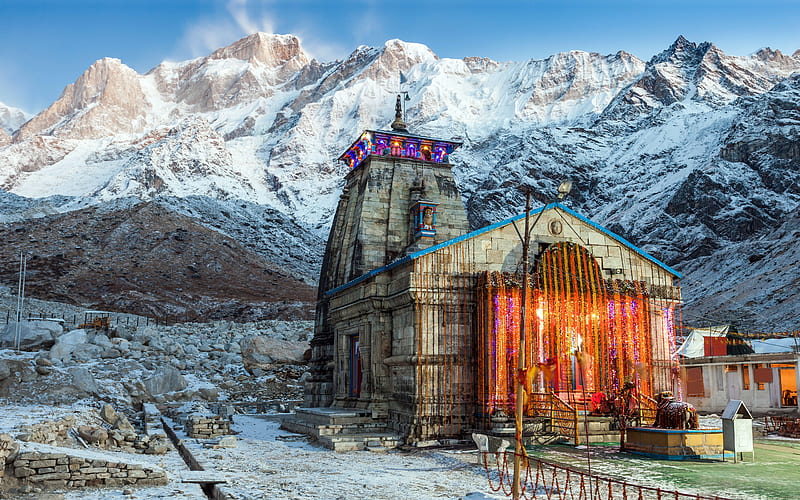
Shri Kedarnath Jyotirlinga Temple
Rudraprayag, India
- Attend the morning aarti ceremony.
- Capture the scenic beauty in photos.
- Explore the local market for souvenirs.
- Meditate in the serene environment.
- Trek to Vasuki Tal lake.
- Visit the Bhairavnath Temple.
Known for:
Description:
Nestled amidst the majestic Garhwal Himalayan range in Uttarakhand, India, the Kedarnath Temple is one of the twelve Jyotirlingas of Lord Shiva. This sacred shrine, perched at an altitude of 3,583 meters (11,755 feet), attracts pilgrims and tourists alike with its spiritual significance and breathtaking natural beauty. The temple is only accessible via a challenging trek, adding to the sense of accomplishment and devotion experienced by visitors. The surrounding snow-capped peaks, the serene Mandakini River, and the crisp mountain air create an atmosphere of profound peace and tranquility. Whether you are a devout Hindu or simply seeking a unique travel experience, Kedarnath offers an unforgettable journey for the soul. Remember to check weather conditions and prepare adequately for the trek.
History:
The history of Kedarnath Temple is shrouded in legend and antiquity. According to Hindu mythology, the Pandavas, seeking redemption after the Kurukshetra war, came to the Himalayas to seek Lord Shiva. Shiva, wishing to avoid them, transformed himself into a bull and hid among the cattle. Bhima, one of the Pandava brothers, recognized Shiva and tried to seize him. Shiva then dived into the earth, leaving behind his hump at Kedarnath. The present temple is believed to have been built by Adi Shankaracharya in the 8th century AD. The temple has withstood the test of time and natural calamities, including the devastating floods of 2013, and remains a symbol of faith and resilience.